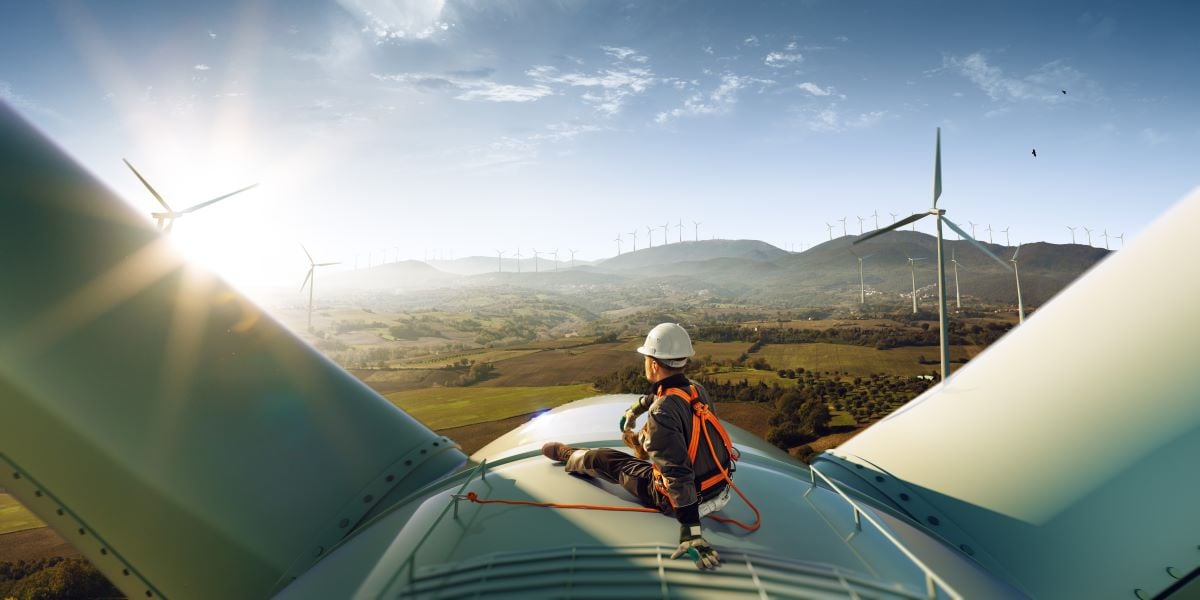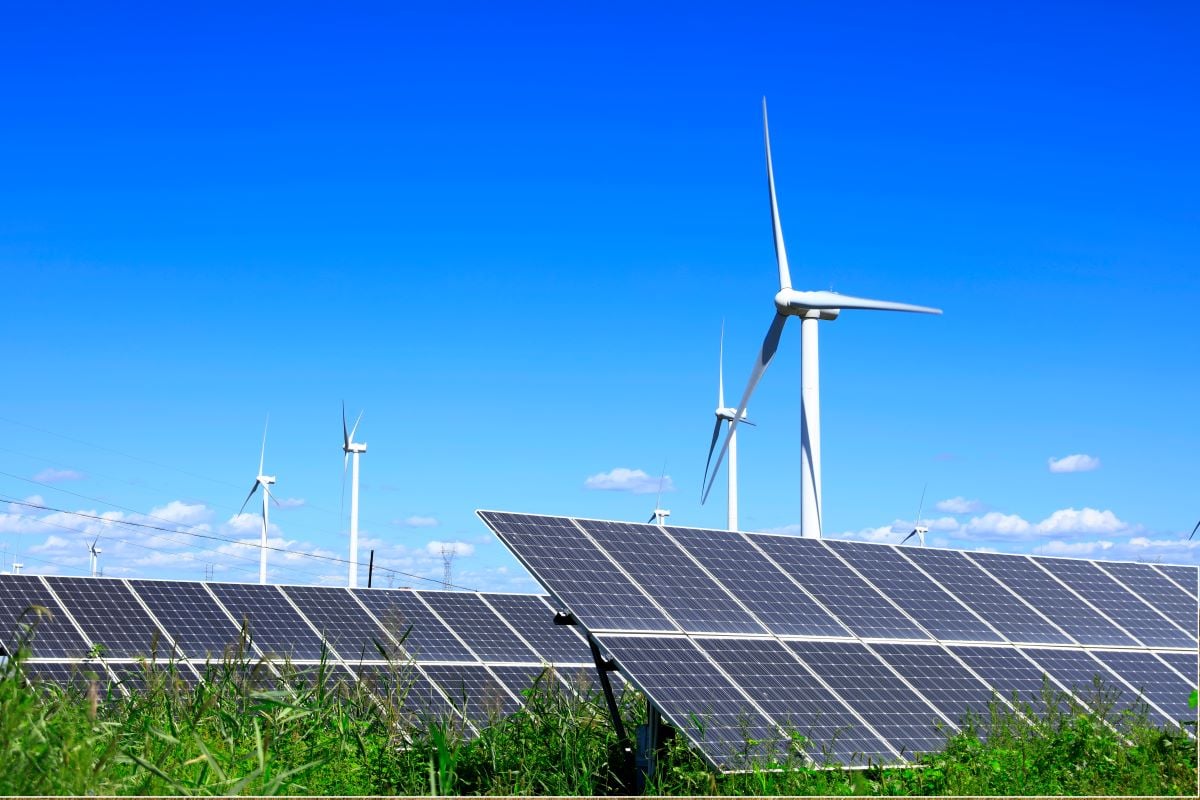In the world of decarbonisation and increasing focus on sustainable solutions, renewable energy solutions have increased globally. Welcome to the journey through the history and future of renewable energy. Explore the ancient roots and modern innovations that shape the commitment to a sustainable, low-carbon future. Join us as we navigate the dynamic landscape of clean energy, blending ancient wisdom with cutting-edge technology.

Renewable energy is generated from natural resources, such as the sun, wind, and water, both renewable (it can be replenished over time) and sustainable. This type of energy has a long history. However, it has seen a resurgence in recent years as concerns about environmental crises and the need for energy independence have grown.
Renewables in the past
The history of renewable energy can be traced back to ancient civilizations, who used the power of the sun, wind, and water for a variety of purposes. Ancient Greeks and Romans used wind-powered water pumps to irrigate their crops, and the ancient Chinese and Persians used water wheels to grind grain. However, the widespread use of fossil fuels and the Industrial Revolution in the 18th and 19th centuries led to a decline in the use of renewable energy.
In the 20th century, with the rise of the environmental movement and increasing concerns about the negative impacts of fossil fuels on the planet, interest in renewable energy began to grow again. In the 1970s, the oil crisis led to a renewed focus on energy independence and the development of alternative energy sources. Governments around the world began to invest in research and development of renewable energy technologies.
Where renewable energy is at the moment
Today, renewable energy is an established and growing industry, with many different technologies available. According to the International Energy Agency (IEA), in 2022, renewable energy sources represented around 26% of global power generation.
Their share of the power mix is forecast to increase by 10 percentage points to 38% in 2027. On the other hand, fossil fuels continue to be the dominant source of energy. In 2019, coal, oil, and natural gas together represented around 78% of global primary energy consumption.
However, the use of fossil fuels has been declining in recent years, and in 2019, the CO2 emissions from fossil fuels decreased by 2%. IEA expects renewables to transform the global power mix through 2027, becoming the largest source of electricity.
Over 2022–2027, renewables are seen growing by almost 2,400 GW, equal to the entire installed power capacity of China. The agency expects renewables to account for over 90% of global electricity capacity expansion over the five-year period.
Read more: Net zero and a circular economy: Top 3 opportunities and challenges
Solar power is one of the most widely used forms of renewable energy, with both solar photovoltaic panels and solar thermal systems used to generate electricity. Wind energy is also popular, with wind turbines used to generate electricity. Biomass, geothermal, and hydropower are other forms of renewable energy that are used to generate electricity.
What will the future hold for renewables?

The future of renewable energy looks bright, with many countries and companies investing in the research and development of new technologies and committing to the use of renewable energy. IEA expects renewable consumption for heating purposes to increase by almost one-third during 2022–2027, raising the modern use of renewables in heat from 11% to 14% by 2027.
Read more: Green infrastructure: how nature can improve urban living
In the coming years, we can expect to see continued growth in the use of solar and wind power, as well as the development of new technologies such as offshore wind, wave and tidal energy, and advanced biomass.
One of the biggest challenges facing the renewable energy industry is storage. Because the sun doesn't always shine and the wind doesn't always blow, it can be difficult to store the energy that is generated by these sources so that it can be used when it is needed.
However, there are many different storage technologies in development, such as batteries, hydrogen fuel cells, and compressed air systems, that may help solve this problem in the future.

Another challenge is the cost of renewable energy. While it has come down significantly in recent years, it is still more expensive than fossil fuels in many cases. However, it is projected that the cost will continue to decrease as the technology improves and economies of scale are achieved.
Additionally, the environmental and health costs of fossil fuels are not always included in the price, so when these externalities are considered, renewable energy is often more cost-effective. The Russia–Ukraine 2022 military conflict sparked unprecedented momentum for renewables as it generated a truly global energy crisis and expedited Europe’s clean energy transition.
Read more: 5 Sustainable business practices to achieve net zero
Today, renewable energy is a growing industry, with many different technologies available. The future of renewable energy looks bright, with many countries and companies investing in research and development and committing to using renewable energy. New technologies and economies of scale support the continued growth of renewable energy in the future.
Renewable energy vs nature-based solutions
Whilst renewable energy is an efficient and sustainable solution to capture CO2 emissions, it is important to note that other carbon mitigation solutions, such as nature-based solutions, can offer many advantages in addition to carbon sequestration. Nature-based solutions, such as the large-scale reforestation, afforestation, and energy-efficient cookstove projects of DGB Group, offer a multitude of environmental and socio-economic advantages, such as ecosystem restoration, biodiversity preservation, job creation, and community training, to name but a few. These projects are therefore often preferred and have a higher demand than projects solely focused on carbon mitigation.
Our projects also generate top-quality verified carbon credits that help organisations and individuals offset their carbon footprint and reach net zero.
Start your green journey with DGB



